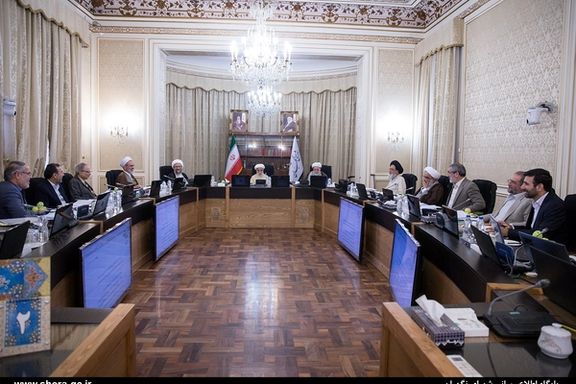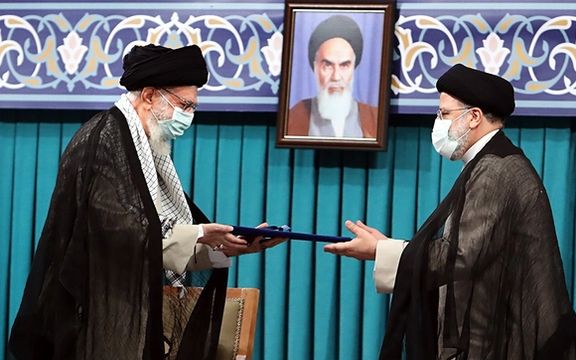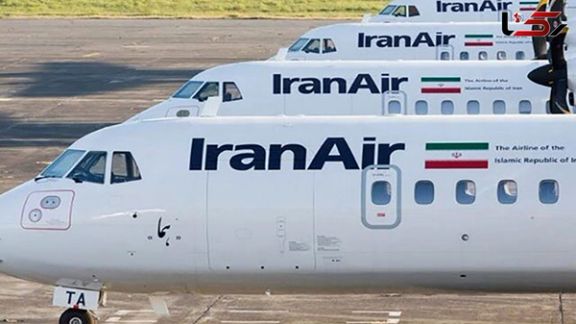Iran identifies 63 new dengue fever cases, declaring it top health crisis

Iran’s Deputy Minister of Health announced 63 new cases of dengue fever, stressing that it is currently the country's most critical health issue.

Iran’s Deputy Minister of Health announced 63 new cases of dengue fever, stressing that it is currently the country's most critical health issue.
On Tuesday, Saeed Karimi said that most patients are travelers from the Persian Gulf countries with seven provinces affected.
Last week, Iran’s Ministry of Health reported 138 cases of dengue fever identified over the past two months and warned of a potential outbreak in September and October. In June, the ministry also announced three deaths.
Iran is already facing a critical shortage of doctors and nurses in the healthcare system now battered by the country's economic crisis.
The first reported case of dengue fever in Iran occurred in 2008 in a patient who had traveled to Malaysia.
The World Health Organization (WHO) says dengue, or break-bone fever, is a virus spread by mosquitoes, common in tropical and subtropical areas. Most people don't show symptoms, but those who do may experience high fever, headache, body aches, nausea, and rash, usually recovering in 1-2 weeks. Severe cases can be fatal and need hospital care.
According to WHO, the incidence of dengue has dramatically increased globally, with cases rising from 505,430 in 2000 to 5.2 million in 2019. Many cases are under-reported or misdiagnosed as other febrile illnesses.
The highest number of cases was recorded in 2023, with over 6.5 million cases and 7300 deaths affecting over 80 countries.

Syria's news agency says an Israeli airstrike in Baniyas, western Syria was launched in the early hours of Tuesday morning, coinciding with the arrival of two Iranian ships at the port of Latakia.
SANA reported that the strike occurred just after midnight Monday, targeting a position near the coastal city of Baniyas, resulting in material damage.
The Syrian Observatory for Human Rights (SOHR), a UK-based NGO with extensive sources in Syria, said it is the third Israeli attack on Baniyas this year.
The organization noted the presence of Iranian military advisors in the targeted area and added that two missiles hit coastal buildings, including one linked to air defense, causing a significant fire.
Additionally, two individuals believed to be members of the Lebanese Hezbollah were killed and a Syrian driver seriously injured in a drone attack on a car near a military checkpoint on the Damascus-Beirut highway.
The vehicle, belonging to Hezbollah, Iran's largest and most powerful proxy, was completely incinerated, with the victims' bodies charred inside, reported the SOHR.
The attack, carried out from the Mediterranean Sea, adds to the stream of Israeli operations since the Syrian civil war began in 2011. The attacks have primarily targeted Bashar al-Assad's forces and positions held by groups supported by Iran. Despite the frequency of the assaults, Israel has rarely issued comments.
It also comes as Israel is fighting Hezbollah on its northern border. Since the Gaza war broke out on October 7, over 3,400 projectiles have been launched by the terror group towards Israel in allegiance with Iran-backed Hamas in Gaza.
In April, an alleged Israeli strike on the Iranian consulate in Damascus resulted in the death of Mohammad Reza Zahedi, a high-ranking Quds Force commander and several other IRGC officers. In retaliation, the Islamic Republic launched a barrage of missiles and drones toward Israel.
Israeli officials, despite their usual silence on such operations, have consistently declared their determination to prevent Iran from expanding its foothold in Syria.

Last Friday's presidential election in the Islamic Republic of Iran (IRI) serves as a stark reminder that the country’s electoral process is neither free nor fair.
While the Islamic government promotes participation as voluntary and democratic, a closer examination reveals a system riddled with coercion, manipulation, and inherent inequality.
Iran’s elections are often portrayed as a contest between fundamentalists and reformists, suggesting a choice for the electorate. However, this dichotomy can be considered highly misleading, as it oversimplifies the political landscape and obscures the underlying complexities.
The real power lies not with the elected president but with the Supreme Leader and the unelected bodies that serve him. The Guardian Council, an unelected body, vets all candidates and can disqualify any deemed insufficiently loyal to the regime.
This ensures that only those who align with the Supreme Leader’s vision can run for office, transforming the election into a controlled charade rather than a genuine democratic exercise – as experts have often noted.

The people's vote becomes meaningless when an unelected individual, the Supreme Leader, holds the power to nullify their decisions.
According to Article 110, Clause 9 of the Iranian Constitution, the Supreme Leader's endorsement is required for the presidential decree to take effect. This endorsement signifies that until the Supreme Leader approves the elected president, the president has no legal authority over the executive branch.
This mechanism underscores that the legitimacy of the people's vote is contingent upon the Supreme Leader's signature, which confers power to the president.
Furthermore, the Supreme Leader's endorsement serves a supervisory role throughout the president's term. If the president deviates from prescribed principles, the Supreme Leader can withdraw his endorsement, voiding the president's authority and legitimacy.
Thus, the system structurally ensures that ultimate power remains with the Supreme Leader, thereby significantly diminishing the impact of the popular vote and perpetuating the state’s autocratic framework.
Even if a candidate emerges victorious from this skewed process, their power remains severely constrained.
The Supreme Leader, who holds ultimate authority, can override presidential decisions, rendering the office of the presidency largely ceremonial.
The parallel institutions created by the Supreme Leader, including the Islamic Revolutionary Guard and various councils, wield significant power over key aspects of governance and policy, further diluting the president’s influence.

Contrary to the Islamic Republic’s claims, participation in elections is far from voluntary. Voting habits are closely monitored, and individuals who do not participate often face severe repercussions.
Access to higher education, government jobs, and even basic civil rights can be contingent upon one’s voting record. Those who abstain from voting are frequently punished, directly or indirectly, when seeking employment or educational opportunities.
This coercion ensures a high voter turnout, which the regime uses to claim legitimacy while masking the underlying lack of genuine freedom.
Additionally, the high number of void votes indicates that many people go to the voting polls only to receive the associated benefits but refuse to actually vote for any candidate.
This phenomenon further underscores the disillusionment and lack of genuine choice faced by the electorate, many of whom likely participate under duress rather than as an authentic exercise of democratic will.
The system’s deep-seated discrimination
The discriminatory nature of Iran's political system extends beyond the electoral process, influencing all aspects of governance.
The constitution of the IRI primarily categorizes people into seven distinct groups, assigning different rights to each.
This hierarchical structure starts with a gender divide, privileging men over women, and extends to religious discrimination, where Muslims are prioritized over non-Muslims. Among non-Muslims, those whose religions are mentioned in the Quran are given more rights than those that are not, who face even greater discrimination.
Muslims are further divided into Shia and Sunni, with Shia Muslims, particularly those of the Twelve-Imam sect, enjoying the most privileges. Within this sect, there is an additional distinction between ordinary believers and mujtahids (Islamic scholars qualified to interpret religious law), with mujtahids holding significantly more power and rights.
For example, Iran's ten key decision-making institutions, including the Supreme Leader, the Council of Experts, the Guardian Council, the head of the judiciary, the head of the Supreme Court, and the Attorney General, are exclusively reserved for mujtahids.
This structure excludes more than 99% of the Iranian population, including all women, non-Muslims, and non-mujtahid Muslims, from participating in these critical roles.
The laws of the IRI are steeped in practices that violate basic human rights. These include stoning, retribution, dowry, polygamy for men, and whipping. Women’s rights are severely curtailed, with their legal status considered half that of men. Women are deprived of rights to divorce and child custody, while Baha'is and Sunnis face severe restrictions on their right to study, work, and travel. During Eid celebrations, Sunnis are prohibited from having mosques or conducting congregational prayers in major cities.
These practices are part of a broader system of discrimination and oppression that has persisted for the past 45 years under the Islamic Republic.
The path to freedom and democracy
The constitution of Iran, the gender-apartheid system of the Islamic Republic, religious governance, and Islamic ideology have all contributed to the human rights abuses perpetrated over the past four decades.
Thus, true freedom and democracy in Iran may only be achievable by transitioning to a secular government based on the principles outlined in the Universal Declaration of Human Rights.
The political system’s portrayal of a choice between fundamentalists and reformists serves as a tactic to force people to choose between bad and worse. Even this false choice was absent in the latest election, as candidates openly pledged loyalty to the Supreme Leader and made no promises of genuine reform. They offered hollow promises of economic improvement, despite a historical pattern of rising inflation, unemployment, and housing prices.
Under the current system, addressing Iran's structural problems is practically impossible, as real power resides with the Supreme Leader and the parallel institutions he controls. The outcomes for past presidents and prime ministers—many of whom have been imprisoned, sidelined, or died under suspicious circumstances—highlight the difficulties of achieving reform within the existing framework. This suggests that significant change is seemingly impossible without altering the concentration of power within these established structures.
Critics and opponents of the Islamic Republic insist that Iran's presidential election last Friday was not an exercise in democracy but a stark reminder of the regime's authoritarian nature. They argue that the only apparent path to genuine freedom and democracy lies in dismantling the current system and establishing a government that respects the rights and dignity of all its citizens.

Iran's Sahand warship finally sank on Tuesday after damage inflicted on the frigate on Sunday sparked speculation of a cyberattack.
The vessel had been briefly repositioned following its initial capsizing in Bandar Abbas but the damage was too great to reverse on the warship equipped with surface-to-surface and surface-to-air missiles, anti-aircraft batteries and sophisticated radar and radar-evading capabilities.
"The Sahand warship, which was rebalanced on the water with great difficulty on Monday, has now sunk after the rope holding the ship broke," reported Nournews, a news agency linked to the Supreme National Security Council.
On Sunday, the official news agency IRNA, announced that the ship "lost its balance due to water ingress". Downplaying the damage, it was hasty in adding that "the vessel is being returned to balance quickly".
Security analysts suggested it could be the work of an Israeli cyberattack amid the ongoing shadow war between the two archenemies.
In 2020, a suspected Israeli hack at Shahid Rajaee port caused days of disruptions and damage, allegedly in retaliation for an attempted Iranian cyber attack on Israel's ports.
Ronen Solomon, an Israeli security analyst, told The Telegraph the incident had “all the elements that could point to a sophisticated operation with a space of denial that suits both sides, Israel and Iran”.
It is the latest mishap to tarnish the Navy's fleet. In January 2018, a naval destroyer, Damavand, sank in the Caspian Sea after crashing into a breakwater and in June 2021 Iran’s largest navy ship at the time, the Kharg, sank after catching fire in the Gulf of Oman.

Iran’s deputy minister of roads and urban development has criticized whispers of regulating prices for airlines, stating that running an airline under such restrictions is impossible.
The comment highlights the ongoing tension between the government and the aviation industry over ticket pricing.
Mohammad Mohammadi-Bakhsh said that the High Council of Aviation should set prices, a practice that has been in place for many years. However, with current whispers of price liberalization, there is concern about significant increases in flight prices.
Despite the government's attempts to prevent price hikes, airline companies, burdened by rising operational costs, oppose the move.
The head of the Civil Aviation Organization on Tuesday also claimed the arrival of 100 airplanes and helicopters over the past 33 months, with 55 put into operation.
“Currently, 270 ultralight aircraft and helicopters are operating in the country's aviation fleet. We need 550 aircraft."
It comes as Iran recently purchased a 29-year-old plane from the Taliban, highlighting the government's desperate measures amid global sanctions which continues to tie Iran's hands. Critics slam the Raisi administration's claims of fleet expansion, noting many supposed new additions are merely old planes repaired in Iran.
The purchase follows Airbus's cancellation of a major deal to sell Iran 100 planes, worth $30 billion, due to the Trump administration's withdrawal from the JCPOA and reimposition of sanctions. Since the 1990s, Iran has struggled to buy new aircraft or spare parts due to sanctions, leading to a steadily deteriorating fleet.
As a result, Iran's aviation fleet has become increasingly old and unreliable, with an average age of over 25 years and many planes in dire need of major repairs. The government's failure to secure modern aircraft continues to compromise the safety and reliability of air travel in the country.

Mohammad Shirazi, the head of Ali Khamenei's military office, lauded Iran's military capabilities, particularly highlighting the recent attack on Israel.
The Supreme Leader's military chief said that Iran is "at a point where we can confidently carry out similar operations and showcase our capabilities to the world," referring to the aerial assault on Israel in April when a barrage of 350 drones, rockets and missiles was sent towards Iran's archenemy.
Around 99 percent of the barrage was intercepted by Israel and a US-led coalition, though it continues to be a point of pride for Iran.
Shirazi further boasted, "We have reached a stage where major powers are extending their hands to us to meet their needs." While he did not specify which major powers he was referring to, his comments allude to Iran’s provision of drones to Russia in its ongoing war against Ukraine, as well as reports of supplying ballistic missiles.
Iran continues to back Yemen's Houthis which are currently blockading the Red Sea region and attacking commercial shipping, in allegiance with Iran-backed Hamas in Gaza. They say the blockade aims to force Israel into a ceasefire amid the longest Gaza war in history.
Meanwhile, Iran's largest proxy, Hezbollah in Lebanon, continues to attack Israel in support of Hamas. Iran's proxies in Syria and Iraq have also send projectiles towards the Jewish state in addition to targeting US facilities and personal in the region following its support of Israel's right to defend itself after Hamas's October 7 attack on Israel.






